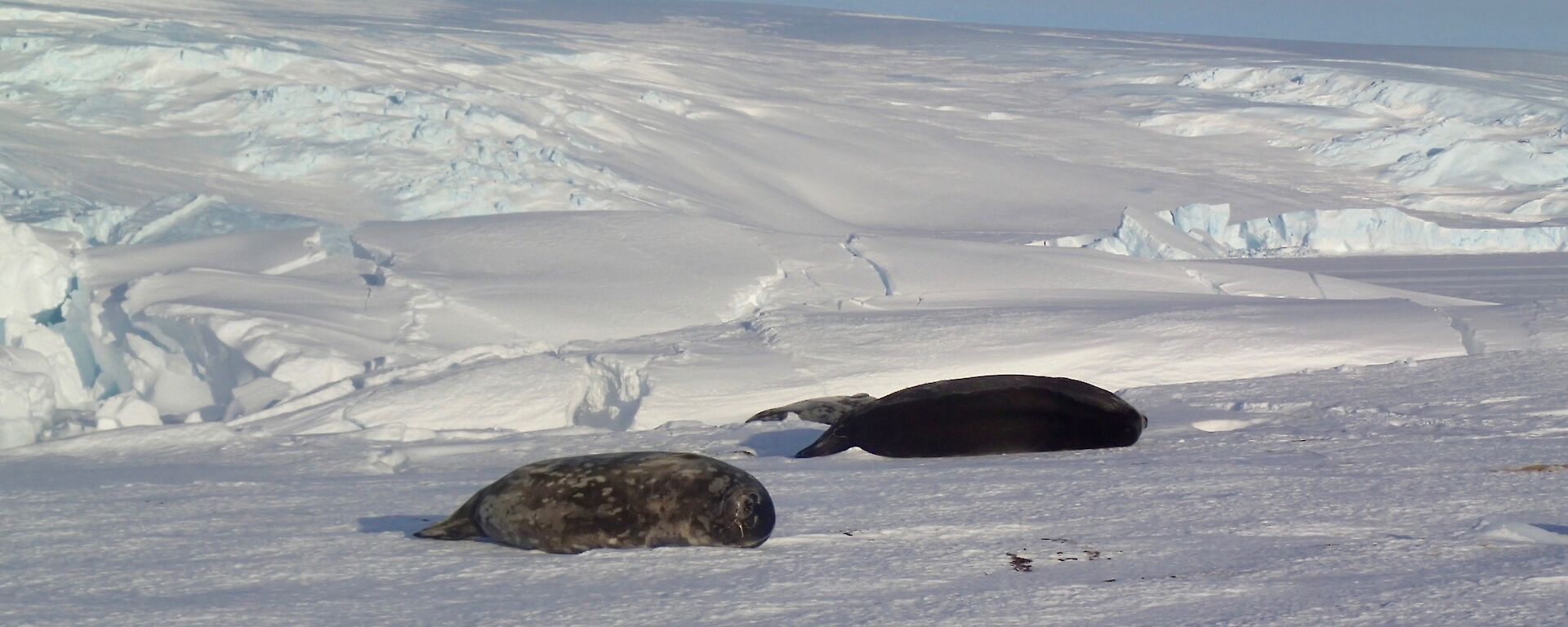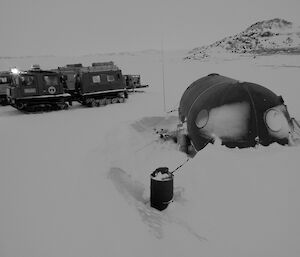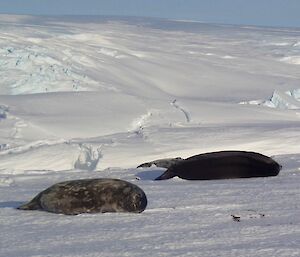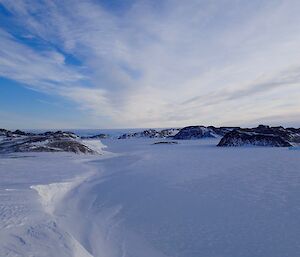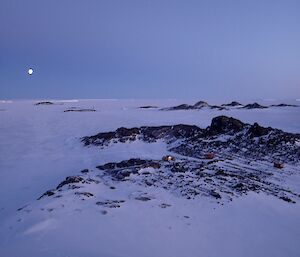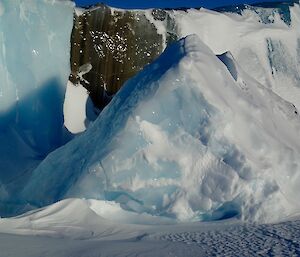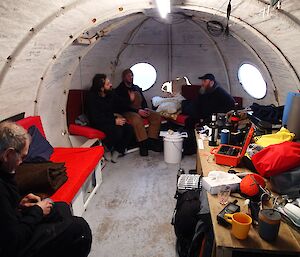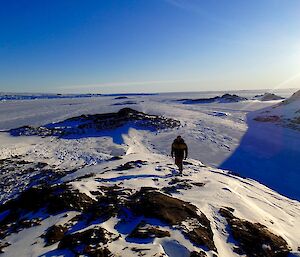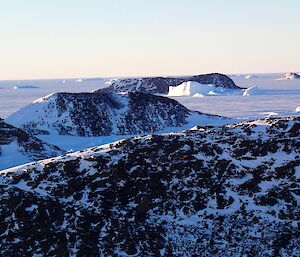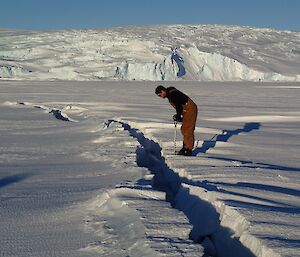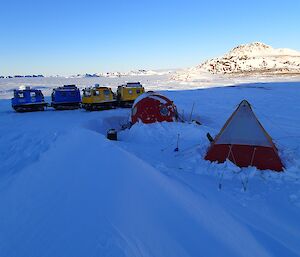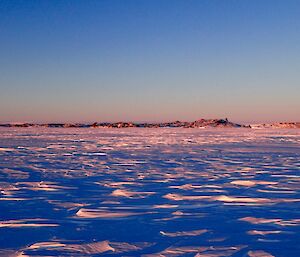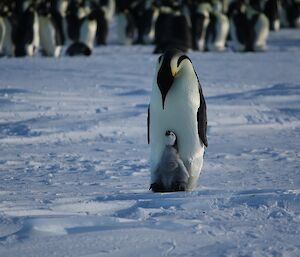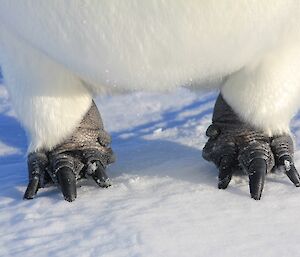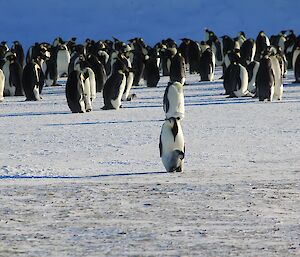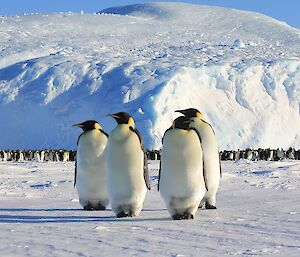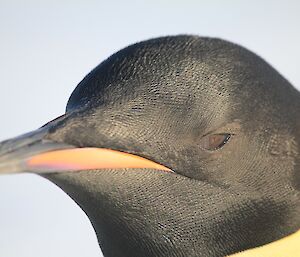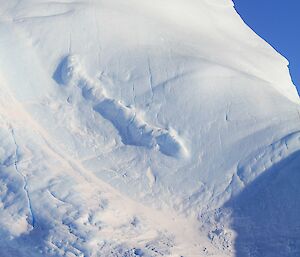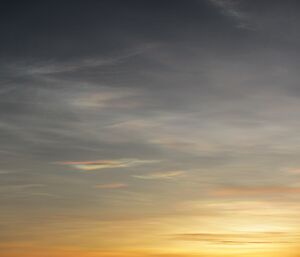Last week I was lucky enough to be involved in the annual Ledingham’s traverse. Every year, five or six people get to head off west from the station and drive for about 200 kilometres on the sea ice to get to Ledingham’s Depot. It’s a tradition from the days of the dog sled teams. The idea is to cement our ability to traverse on or around the continent. On trips like this there are limited options for rescue support from station so we have to be completely self sufficient. This means we need to take a diesel mechanic, a field survival expert and everyone has to have completed field, survival and sea ice training. If we go through the sea ice in the Hägglunds we have to be able to self extricate, and we train pretty hard for this particular scenario. For transport we had two Hägglunds vehicles, one towing a sled with fuel and survival equipment.
We also have limited radio coverage so we rely on satellite phones which were excellent. The trip required an extra 1000 litres of diesel (special Antarctic blend) that can’t freeze. We were all issued jobs before departure. As the plumber I always get water and the ever tiresome field waste — basically sewage.
Pre-prepared meals were taken from station for four nights and five days with people taking their own lunches, mostly dehydrated meals and a flask of hot water. A 12 day ration pack per person was also taken and not opened.
Four of the ration packs were replaced at Ledingham’s Depot due to the frozen and ruined state of the ones that were there. They seemed to have had water get inside them and the food was mostly unusable. We used a total of 70 litres of water on the trip, and had no need to melt any.
The first stage of the trip is from Mawson to Colbeck Peninsula. The sea ice from Mawson to Colbeck has improved in the last month with the added snow cover. Tide cracks encountered in the previous trip had closed and were more deeply frozen. We had pretty smooth ice on this first leg and covered 90 kilometres in five hours. We crossed three major tide cracks, where we had to get out and drill the surrounding area to find a good and safe path across them.
Colbeck itself is a beautiful location, the hut is on an island and surrounded by hills. It is also next to the Taylor emperor penguin rookery. This rookery is highly protected as it’s the only place on earth that emperors have a rookery on the land (not on sea ice). I spent the arvo climbing the surrounding peaks and enjoying the stunning weather and conditions.
The ice to Ledinghams Depot was also covered in snow and had no visible tide cracks, with the exception of the tide crack at the depot. The previously used route from Colbeck to Ledingham’s was vastly affected by large tabular bergs close to the coast, so we navigated further out to sea and around the largest of these, coming close to Solitude Island before heading towards the coast again and through the fjords to the depot.
This part of the trip was slow going but absolutely mind blowing as far as scenery goes. It was a maze of huge icebergs, some of them three kilometres long. Others were streaked with black, which is really rare and must be from glacial rock up on the plateau getting moulded into them over the thousands of years that they develop.
It was hard yakka in the Hägglunds as we were dodging big chunks of ice – “Hägg killers” – and trying to find the most comfortable route without straying too far from the GPS route. The three of us in the yellow Hägg took turns to drive and took us eight hours to get to the depot. Ledingham’s is a cool hut, it’s kind of like a hot dog really. We set up a polar pyramid tent to use as a toilet which is always a bucket with a garbage bag and toilet seat… not as bad as it sounds. Everything freezes as it was −22°C so it is sort of hygienic.
The next day we set off on the uncharted route to the Fold Islands and the associated emperor penguin colony. On the way we saw a heap of seals all heavily pregnant and a lots of fat emperor penguins. They had a big tide crack right near the colony so they did not need to hike 20 kilometres to feed. I think this explains why they’re in remarkable condition for this time of year. Around the Fold Islands northern point there were two visible tide cracks with free water. None were more than 50 centimetres across and were all easily crossed.
We found the colony right up the end of an inlet and they were on a glacier so we had found a second colony that were not on sea ice – a massive find in scientific terms. Their nesting spot was stunning as it was in this big fjord. A fjord is formed when a glacier cuts a U-shaped valley by ice segregation and abrasion of the surrounding bedrock. Glacial melting is accompanied by the rebounding of Earth’s crust as the ice load and eroded sediment is removed (also called isostasy or glacial rebound). It really is a spectacular location.
The colony was located slightly north east and was on the glacier as opposed to the sea ice. We parked the vehicles approximately 500 metres away and approached on foot. Two hundred metres from the colony we climbed above and to the north of the colony for the photos to be taken. The penguins were very friendly on the sea ice and many came over to look at us. The cries of the chicks was clearly heard even from 200 metres away.
I got to spend a couple of hours just wandering around as the penguins shuffled back and forth to feed all day. They come right up to us and looked as if to say ‘what the hell are you?' then they got bored and wandered off to find their tide crack. There were heaps of little chicks all balanced on their parent’s feet waiting for the other parent to return with a feed of squid, fish or krill. We carried out a photographic census of the Fold Island colony for Barbara, the Division’s penguin scientist.
Overall this was a fantastic trip with good weather and a good result from the penguin colony photographs. Arriving a month before the previous year’s trips gives us the opportunities to send more trips out and to implement some maintenance this season.
Josh and Tony D

